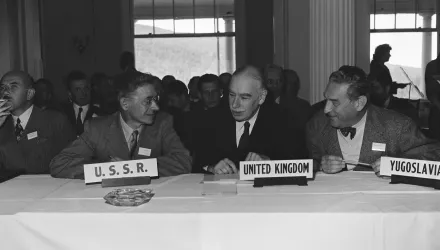International Security is America's leading peer-reviewed journal of security affairs.

Summary
Contrary to the belief that globalization and the information age make closing the military-technological gap easier, an exponential increase in the complexity of technology has made imitation increasingly difficult. In the second industrial age, Imperial Germany built a big-gun battleship comparable to the British Dreadnought that challenged Britain’s superiority. Today, China struggles to upgrade its jet fighters to rival those of the United States. Imitation no longer saves time or money given massive barriers to entry and ever-increasing technological complexity.
Andrea Gilli and Mauro Gilli, “Why China Has Not Caught Up Yet: Military-Technological Superiority, Systems Integration, and the Challenges of Imitation, Reverse Engineering, and Cyber-Espionage,” International Security, Vol. 43, No. 3 (Winter 2018/19), pp. 141–189, https://doi.org/10.1162/ISEC_a_00337.
The full text of this publication is available in the link below.





